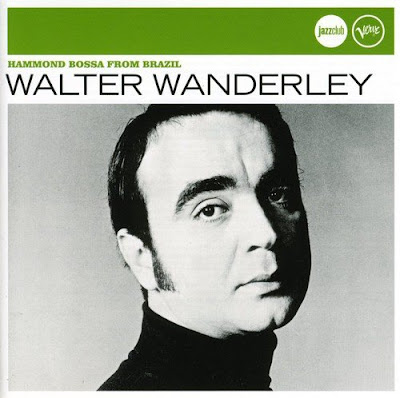 pop charts in September 1966, opening a large pathway of success only menaced by himself and his complex character.
pop charts in September 1966, opening a large pathway of success only menaced by himself and his complex character. Wanderley was born in Recife, Brazil. At five, he was already playing the piano. At 12, he attended the Licee of Arts for a year of theory classes, later studying harmony and arranging. Beginning his professional career while still in Recife, a most lively city with a vibrant cultural life, he worked every night either at the piano or at the organ. At 26, in 1958, he moved to São Paulo and immediately became an active player in nightclubs such as the Claridge, the ![]() Captain's Bar, and Oásis. Wanderley's first recording was in August 1959 for Odeon, with Carlos Lyra's "Lobo Bobo."
Captain's Bar, and Oásis. Wanderley's first recording was in August 1959 for Odeon, with Carlos Lyra's "Lobo Bobo."
 Captain's Bar, and Oásis. Wanderley's first recording was in August 1959 for Odeon, with Carlos Lyra's "Lobo Bobo."
Captain's Bar, and Oásis. Wanderley's first recording was in August 1959 for Odeon, with Carlos Lyra's "Lobo Bobo."Backing his wife, Brazilian singer Isaurinha Garcia (with whom he had a daughter, Monica), he recorded for the second time one month later. At that time, he was Garcia's accompanist and arranger. He would record another six LPs accompanying Garcia and another 19 solo albums in Brazil for several labels; he was left out of some of the credits because of his contract with Philips. Wanderley became known on the artistic scene for recording young artists, like Marcos Valle, Tom Jobim, João Donato, and others, until then with no expression out of the
little nightclubs in which they performed on a nightly basis. But as the tunes and arrangements were fun to dance to, the albums sold very well.
little nightclubs in which they performed on a nightly basis. But as the tunes and arrangements were fun to dance to, the albums sold very well.
Wanderley began an association with singer Claudette Soares in 1963, as an arranger and accompanist. His marriage was broken at this period. He also recorded for several renowned Brazilian singers in that time, among them Dóris Monteiro and Geraldo Vandré. It was when Tony Bennett saw Wanderley during a Brazilian tour and was taken by his playing. He urged Wanderley to move to the U.S. and, he himself talked about him to Verve Records producer Creed Taylor, also giving Taylor some of Wanderley's albums. After some insistence, Taylor sent contracts for Wanderley and his trio to record a single.
 trio accompanied Astrud Gilberto on her A Certain Smile, a Certain Sadness album, also in 1966. He would record six more solo LPs or singles for Verve until the next year, and ten more in his career in the U.S. He always sold well and had a full performing schedule, in which local presentations at the San Francisco area were interspersed with some tours to Mexico.
trio accompanied Astrud Gilberto on her A Certain Smile, a Certain Sadness album, also in 1966. He would record six more solo LPs or singles for Verve until the next year, and ten more in his career in the U.S. He always sold well and had a full performing schedule, in which local presentations at the San Francisco area were interspersed with some tours to Mexico.Wanderley was known for his distinctive staccato stuttering style and mastery of the Hammond B-3 organ and on later recordings and during live concerts a L Series Hammond. His later career was blighted by alcoholism and he died in relative obscurity of cancer in 1986 in San Francisco, California, aged 54. (Info edited from Wikipedia & AllMusic)


